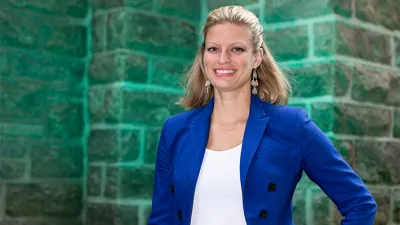
Unearthing Maasai's Creative Force
The sky was the deepest indigo blue. The stars were so close, I was looking out, not up, to them. I was in Hell’s Gate National Park in Kenya as a guest of the Maasai community. That night I reflected on the events of the day – the shared meal, the beautiful Maasai cave where I was to sleep, the stars, the stories, the welcoming warmth of the village – it all led to a love affair. I fell in love with the Maasai.
This was 2004, when I traveled to Kenya as a Rotary Ambassadorial scholar while doing my master’s thesis in fashion design on the social-cultural context of clothing; specifically, on how to incorporate indigenous design into contemporary clothing.
Nearly 10 years later I returned to Kenya. I spent the last two weeks of November 2013 at the Olorgesailie archeological museum site in the South Rift Valley, part of the Maasai ancestral homeland, where the Olorgesailie Maasai Women’s Group (OMHA) meets every day to sell their beautiful beadwork. The proceeds from these sales support their families. However, due to their remote location, they have very few guests and even fewer sales. For many, no sales means no food that day.
Seeing the beauty and technical skill of their work, I hoped the women would be interested in collaborating with me on an ethical apparel collection inspired by their designs. After nearly six weeks of traveling back and forth on the very bumpy road from Nairobi to Olorgesailie, they agreed.
Our first design meeting began with giggling. I had brought my laptop so they could see all of the Maasai-inspired designs of recent years, from Dior to Louis Vuitton and Givenchy to Pucci. Big fashion brands invoking the magic of the Maasai. Due to the reflection of the volcanic ash and hot sun, we could not see the images on the screen, so we decided to have our first meeting in one of the traditional manyattas (a Maasai home). We all crushed into this dark, tiny space. I sat on the fire pit and we went through the images. As I scrolled through them, they would point and say, “Maasai, Narok, Mara…”
Back in the shop area I taped pieces of paper with outlines of some design ideas on the tables. I placed a variety of colored pencils on the table and said, “Okay, ladies, go for it!” The only woman in the group who spoke English was Elizabeth Kilakoi. She laughed with the other women, then explained: “Most of them have never gone to school, have never held a pencil. They have never written anything or drawn, this is very new to them.”
At first they all huddled over one sketch drawing together all at once. Then as one person would get an idea of her own she would move to a new sheet of paper. By day’s end we had 20 design sketches. The second day, another new set of designs. By the end of our time together we had run out of paper. The women are so creative that the original collection in my head completely morphed and evolved into something entirely more interesting, stronger. A true collaboration.
Our goal is to create a capsule collection, the OMHA-Idia’Dega collaboration called Tomon, which means 10 in the Maa language. This 10-piece sustainable apparel collection for women and men was inspired, designed and developed in full collaboration with the Maasai women.
On our last day, the women presented me with a full Maasai outfit, including a breathtaking necklace, bracelets and earrings. I whispered, “This is too much.” I could not say it very loud because I was on the verge of crying. Many of the women were wearing torn old clothes, and I was given this brand new outfit. Elizabeth said, “No we like to give, you are now one of us. We want you to wear this when you get to America, when you are asking people to support our project.”
When I asked the women what they would do with a steady income, they said, “Have easier access to water, money to pay for our children to go to school, buy housing material for stronger homes (most live in wood and mud huts) and being able to have food every day.”
It was the most humbling, and happiest, moment of my life.
–
To learn more about the OMHA-Idia’Dega collaboration, visit www.idiadega.com. This essay is reprinted with permission from GlobalPittsburgh.org.
After earning her BS in business administration from Drexel LeBow in 1992, Tereneh Mosley worked in marketing before deciding to pursue her love of fashion. She earned her master’s in fashion design from Kenyatta University in 2007 and founded Idia’Dega Elegant Ethical Apparel in 2008. She has taught fashion marketing at Parsons-The New School for Design and the Art Institute of Pittsburgh. Last year, she was a visiting scholar on global fashion at Yale-NUS, Singapore. Her design work has been featured in Martha Stewart Weddings magazine, and her Tomon Collection will preview in July.

